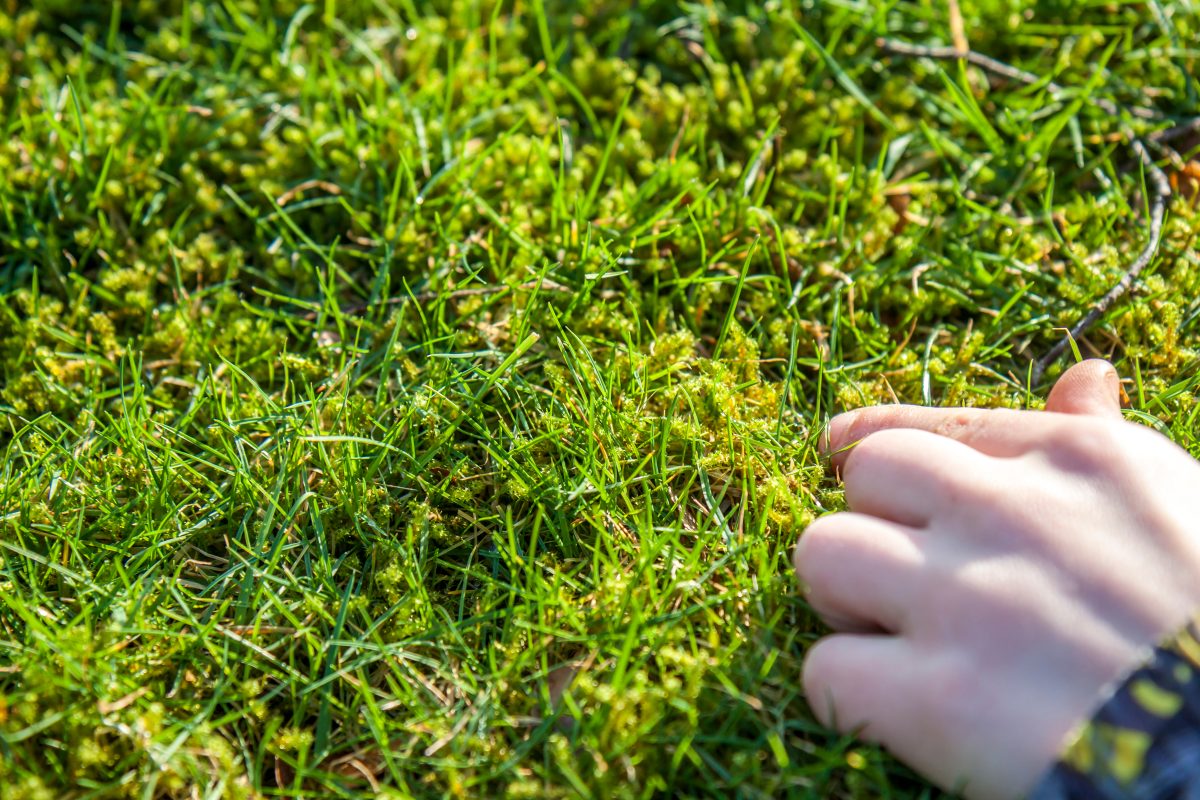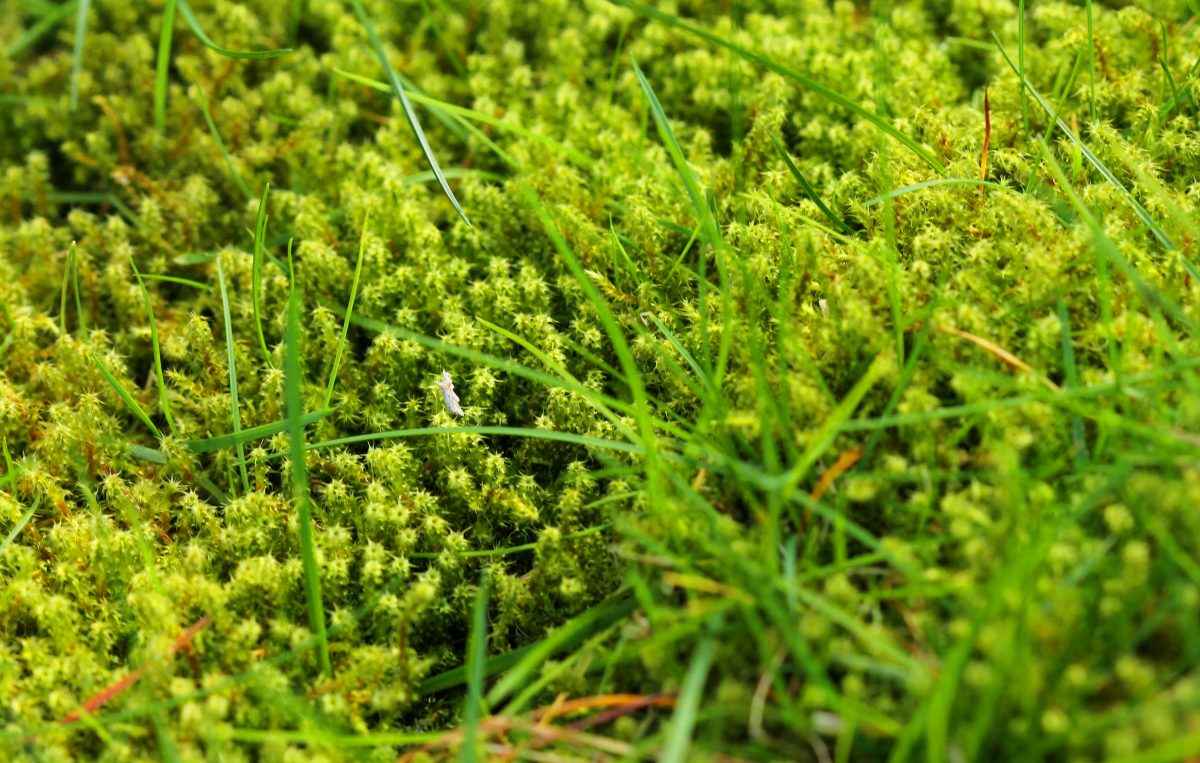
Why does moss appear on lawns in the first place? Well, it’s usually because of poor soil conditions or inadequate sunlight. It might also be due to poor drainage or compacted soil. Moss thrives where grass struggles – so by addressing these issues head-on, we’re already halfway there.
In this article I’ll guide you through the steps needed for reseeding your lawn effectively; starting with removing existing moss and preparing the ground for new seedlings to flourish. By following my tips and advice carefully, you’ll see great results in just a few weeks’ time!
Understanding Moss Growth in Your Lawn
Moss taking over your lawn can be a real headache. Before we dive into the process of reseeding, it’s essential to understand why moss is thriving in your yard.
Moss isn’t like other plants. It doesn’t need fertile soil to grow – actually, quite the opposite! Poorly drained, compacted soils that are acidic and low in nutrients are its preferred environment. If you’ve noticed areas of moss on your lawn, chances are these conditions exist.
Let’s break down some factors that contribute to moss growth:
- Poor Drainage: Wet soil provides an ideal home for moss spores.
- Acidic Soil: Moss thrives in soils with a pH level below 6.
- Low Light Conditions: Unlike grasses that love sunlight, shady spots offer perfect cover for this plant.
- Soil Compaction: Compact soil prevents roots from growing deep and allows surface-loving moss to spread.
A quick way I use to check my garden’s condition is by doing a simple soil test. You can find kits at any local gardening store or online retailers which will tell you about nutrient levels and pH balance of your yard.
The more aware we become about what makes our lawns susceptible, the better equipped we’ll be when it comes time for reseeding!
Now let’s take a look at these elements individually:
| Factors | Conditions favoring Moss |
|---|---|
| Drainage | Poor/Excessive water logging |
| Soil Acidity | pH less than 6 |
| Light Exposure | Shady/low light |
| Mowing | Close-cut lawns |
If there’s one takeaway here: understanding how and why this green invader grows so successfully on our lawns gives us key insights into turning things around during the reseeding process! Remember: knowledge is power – even when dealing with something as seemingly insignificant as lawn maintenance!

Steps to Reseed a Moss-Covered Lawn
If you’re facing the challenge of a moss-covered lawn, I’m here to guide you through the reseeding process. It’s simpler than it might seem. The first step is understanding why moss has taken over your lawn in the first place.
Moss thrives in damp, shady conditions with poor soil quality. So if your yard is covered with this green invader, it’s likely that these conditions are present and need addressing.
Here’s how we’ll tackle this issue:
- Remove existing moss – Rake up as much of the existing moss as possible using a sturdy garden rake.
- Improve soil condition – Apply lime if necessary (a simple pH test will let you know) and consider adding compost or other organic matter to improve nutrient content.
- Address shade issues – If there are trees or structures creating too much shade, see what can be done about letting more sunlight reach your grass.
- Reseeding – Now for reseeding itself: Choose high-quality grass seed suited for your local climate and sun exposure levels.
Let me break down each step further:
- To remove existing moss from your lawn effectively, use vigorous strokes with a stiff garden rake across all affected areas until most visible signs of moss have been eliminated.
- Improving soil condition involves testing its pH level — optimal range should be between 6 and 7 for most types of grasses — then applying lime according to manufacturer’s instructions if needed to raise acidity levels above an undesirable low point where many weeds thrive including our unwanted guest – MOSS!
- Compost application provides vital nutrients which help newly planted seeds grow strong roots fast so they’ll have better chances against any future invasion by pesky plants like those nasty ones we’re currently battling here!
For dealing with shade issues: assess whether anything could possibly be changed about landscape elements casting shadows on portions where lush turf should ideally grow instead such as trimming branches off trees nearby maybe?
Lastly comes actual reseeding stage itself; choose good quality seed mix compatible both climatic conditions around area plus amount sunshine received throughout day time because some varieties simply do better under certain environments compared others – thus increasing odds success greatly!
By following these steps diligently without skipping any details along way or rushing through them hastily…you’ll soon start seeing positive results reflecting back at ya every time stepping outside onto what used become unsightly green carpet transformed into beautiful lush field dreams made out right there own backyard!
Conclusion: Maintaining Your Newly Seeded Lawn
Now that your lawn’s been reseeded, it’s crucial to keep up with maintenance to ensure its success. I’ll share some key tips on how to maintain your newly seeded lawn and prevent moss from taking over again.
Watering is the first essential step. It’s best to water lightly but frequently for the first few weeks after seeding. Once you notice new grass sprouting, gradually reduce watering frequency but increase the amount of water each time. This encourages deeper root growth which strengthens the grass against drought and disease.
Another critical part of maintaining a healthy lawn is mowing correctly. Don’t rush this – wait until your new grass reaches about three inches in height before mowing for the first time:
- Set mower blade at highest setting
- Never cut more than one-third of grass blade at once
- Keep blades sharp to avoid tearing tender young grass
Fertilizing appropriately also plays a significant role in keeping moss at bay while promoting lush green growth:
| 1st month | 2nd month | 3rd month |
|---|---|---|
| Nitrogen-rich fertilizer (apply sparingly) | Balanced fertilizer | Slow-release granular fertilizer |
Remember not too over-fertilize as excessive nutrients can lead back towards moss invasion.
Lastly, don’t forget about aerating and dethatching yearly or bi-yearly depending on your soil type and climate conditions – these practices promote better air circulation around roots preventing future problems like compaction or thatch buildup.
With these steps in mind, you’re well-equipped for maintaining a strong, vibrant lawn free from unwanted moss cover! By staying consistent with care routines such as proper watering methods, correct mowing techniques along with right fertilization practices; you’re paving way towards healthier outdoor space!
Maintaining a reseeded lawn may seem daunting initially but believe me it’s worth all effort when you see that thriving patch of green smiling back at you!
Troy Channer is a seasoned professional with over a decade of experience in the construction industry, specializing in residential projects and road infrastructure networks. His expertise spans a broad range of skills, including proficiency in Microsoft Excel, Word, and PowerPoint, which he adeptly uses to streamline operations and enhance productivity.
Troy’s commitment to excellent customer service is a cornerstone of his professional philosophy, always prioritizing client satisfaction and fostering strong relationships. His leadership skills are well-recognized, and he has a proven track record of managing teams to deliver high-quality results.
In addition to his construction experience, Troy is also the proud owner of a successful landscape company based in Oakville. This venture allows him to apply his extensive knowledge of civil engineering and project management to create beautiful and sustainable outdoor spaces for his clients.
Troy holds an Advanced Diploma in Civil Engineering Technology from Humber College, further solidifying his credentials as a highly skilled operations professional in the industry. His combined experience and education make him a versatile professional capable of tackling a wide range of projects.








